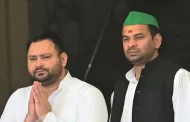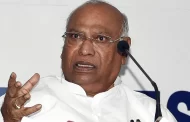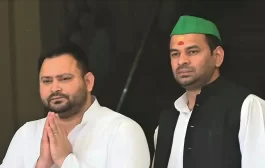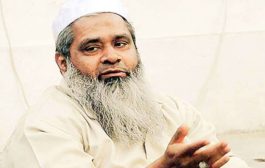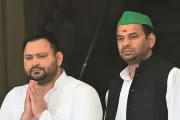BJP found a new weapon, Whatsapp which has wider reach than any other social media platform ever did. It impacts perceptions of the voters towards any party both positively and negatively

The BJP found a new weapon that offered much better targeting than Facebook ever could—WhatsApp. Using it, a specific message could be sent to one group of people and a completely different message to a different group of people.
By making use of people’s pre-existing biases, individuals could be turned into supporters by a party through messaging that would make them believe that the party had exactly the same goals as they did. The platform would allow the BJP to appear vehemently anti cow slaughter to voters in Uttar Pradesh while making it appear ambivalent towards it to voters in the northeast.
Or aggressively pro-Hindutva to some voters and solely development-oriented to others. Such was the magic of targeted messaging on WhatsApp.
During the 2014 general elections, WhatsApp was primarily used to create a network of party supporters and karyakartas with only about 9000 to 10,000 WhatsApp groups nationally.
At that time, Facebook and Twitter were the primary social media channels that helped create the party’s narrative, and the party’s energies and funds were directed towards these platforms. The potential of WhatsApp seems to have struck them only in early 2016, which is when the party began utilizing the platform for campaigning during assembly elections in all the states that went to polls.
Today, WhatsApp has become a major part of the party’s arsenal, with the party’s IT cell head, Amit Malviya, even telling the Economic Times, ‘The upcoming elections will be fought on the mobile phone . . . In a way, you could say they would be WhatsApp elections.’
The BJP built a massive network of over 20,000 WhatsApp groups in just the state of Karnataka before the state went to polls in May 2018, and the party has built equally large networks in many states that have gone to polls since 2014.
This means that the party has the capacity to send messages to crores of people instantly through the lakhs of WhatsApp groups it has access across the country. This is where the BJP vastly outperforms its opposition.
The Congress and other parties continue to depend upon conventional media to deliver their messages and as yet have a much smaller footprint on social media than the BJP.
In August 2018, the following of the BJP and the Congress on their national social media pages was:
BJP:
FB: 14.6 million; YouTube: 0.45 million; Twitter: 10 million
Narendra Modi
FB: 42.7 million; YouTube: 1 million; Twitter: 43.6 million
Rahul Gandhi
FB: 1.8 million; YouTube: 27,814; Twitter: 7.45 million
INC
FB: 4.8 million; YouTube: 1,35,457; Twitter: 4.52 million
Meanwhile, the BJP is looking beyond WhatsApp and is aggressively promoting its own app named the ‘NaMo App’ or the ‘Narendra Modi App’. This would allow them to continue to deliver messages to people even if some day WhatsApp were to change its policies in a manner that led to a decline in the reach of WhatsApp messages.
The NaMo App had over 50 lakh downloads on the Android app store by April 2018 and is one of the very few third-party apps available for download on the Jio app store, with the Jio phones already having sold 4 crore units. The party is also working on increasing the app’s reach by reinstalling it in phones being distributed through government schemes.
In July 2018, the Chhattisgarh government sanctioned a ₹1500-crore scheme called the Sanchar Kranti Scheme, under which over 50 lakh mobile handsets were to be distributed. As per media reports, these smartphones will come pre-installed with the BJP’s NaMo App and Raman Singh App, the latter named after the state’s chief minister.
In recent times, the process of forming WhatsApp groups is also undergoing a transformation. In the early days, most groups consisted of random numbers that a party bought from data vendors or consisted of numbers that the party collected through its various campaigns.
Nowadays, parties are using data analytics to create groups based on demographic and socio-economic factors for better targeting of their messages. Since most of the targeting is based on information available in the public domain, it is extremely likely that even those parties that aren’t utilizing such methods today would eventually form their own teams to take advantage of the potential offered by data analytics.
Determining Voter Behaviour
Starting with tools in the public domain and datasets that the Election Commission itself provides, data analysts can build huge datasets that a party can use for targeted advertising. With just the information on the electoral roll that is publicly available, analysts can get a person’s name, his or her father’s name, location (what booth they vote at), voter ID number and age.
In many large states of India such as Uttar Pradesh and Bihar, the caste of over 70% of the people can be determined simply by analysing their names. With a relatively simple code, a political party can identify the caste and religion of a large number of voters by analysing their last names (surnames), but there are some major complications in the process.
Different communities in different parts of a state sometimes use the same last name and some last names are not easy to classify. Certain last names like Yadav, Paswan, Singh, Agrawal and Shukla are easy to classify in most states but some are used by multiple castes in different parts of a state.
For example, in Bihar, both Bhumihars and Pasis use the last name ‘Choudhary’. The solution to this is relatively easy for a political party. The party has a resource that very few entities do—free labour. There are lakhs of karyakartas who are thrilled to help out with anything that has them doing something other than simply distributing pamphlets and putting up flags. They can be tasked with manually classifying a few names in each constituency so that an algorithm can assign a caste to the entire dataset using their input. Local karyakartas usually know each family’s caste in their area, so this exercise wouldn’t be a difficult one for them.
Data protection laws in India are basically non-existent for data other than financial, health and some other sensitive ones
The BJP had an edge when it came to volunteer engagement for such classification but the edge is slowly evaporating. A few years ago, the BJP was the only one with the cadre strength to be able to undertake massive initiatives like appointing ‘panna pramukhs’.
A panna pramukh was an individual karyakarta who was responsible for outreach and campaign amongst all the voters listed on one double-sided page of the electoral roll that was assigned to them, and which on average consists of sixty names. The Congress too has caught on to the technique and has started the practice of appointing such ‘page in-charges’. Experimenting with the strategy during the elections in Punjab in early 2017, the party also used it during its campaign for the 2017 Gujarat legislative assembly elections.
Once a party has most of the voters’ castes and religions mapped against their names in the electoral roll through a combination of technological tools and manual labour, the next step is to include phone numbers.
Data protection laws in India are basically non-existent for data other than financial, health and some other sensitive ones. This means that obtaining phone numbers doesn’t require the intervention of high-level employees of telecom companies. It is available with data brokers who have probably obtained it from low-level operatives of telecom companies or from SIM card dealers.
Other details that could play a role in determining voting behaviour can also be added to the database against each name. One such detail would be socio-economic status, which is a major determinant of the kind of messages people would respond to and the way they’d choose whom to vote for.
A lot of datasets, like land records, BPL lists, surveys by the National Sample Survey Organization (NSSO) and census data, can provide this information. Much simpler proxies are also available, such as electricity bills, which can be used to judge a person’s economic status. A person’s electricity bill is directly correlated with their income since people with high income often consume more electricity with gadgets and appliances like air conditioners and geysers and hence have higher bills, while the poor have relatively fewer electrical appliances to consume electricity. The extremely poor voters can be identified through the Below Poverty Line (BPL) list, so electricity bills are really useful for segregating the rich from the middle class, especially in dense urban pockets. With this data in hand, parties can create groups consisting of specific types of voters. To most casual observers, the groups might seem to be of just random people living in a specific area, but in reality they would consist of people selected on the basis of their age, religion, caste and economic status. This would allow for targeted messaging and micro-targeting in a way that hasn’t happened in any other country in the world. As an example of what such groups could accomplish for political parties, let’s take the case of Uttar Pradesh.
Assume that a party (Party 1) already has upper caste votes in Uttar Pradesh but requires the support of other caste groups to win an election. The OBC population of Uttar Pradesh comprises approximately 11 per cent Yadavs and 31% others.
Let’s say the Yadavs strongly identify with another party (Party 2) and they’re a group that is unlikely to change its vote. The non-Yadav OBCs on the other hand could be convinced to vote for Party 1 if it could provide them with an effective reason to do so. The simplest way to achieve this goal would be for Party 1 to instil a sense of victimhood in the non-Yadav voters and alienate them from the Yadav voters. WhatsApp groups can prove to be an effective tool to accomplish this.
By gathering adequate data, analysts can, for instance, create groups that consist of only non-Yadav OBCs between the age groups of eighteen and forty, with low to middle socioeconomic status. A close approximation of this group can also be targeted through Facebook and other social media platforms through a little-known feature of Facebook that allows for targeted advertising through the use of lists consisting of email addresses or phone numbers.
If messages stating how the Yadavs had cornered all benefits of reservation in educational institutions and jobs, thereby depriving other OBC groups, were broadcast repeatedly in different forms over such a group, there would eventually be an observable impact. Over a period of two to three months, the arguments sent over WhatsApp would become a part of people’s daily conversations and they would begin to get convinced that their rightful share of benefits had been taken away by the Yadavs.
source: NH



